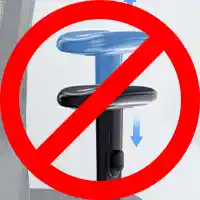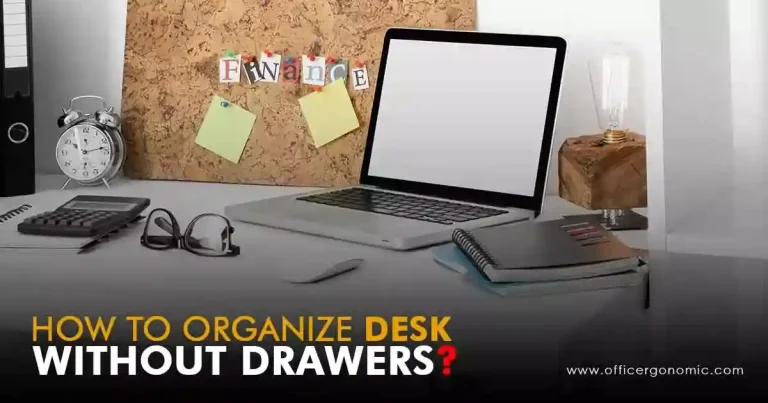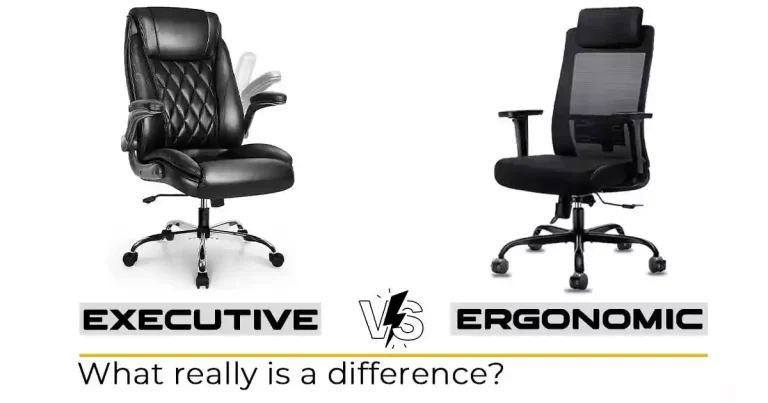Signs of a Bad Office Chair
Take a quick look around you while in your office. Several things that hinder workplace productivity will come to your attention. Is that the printer always jamming or is it your laggy computer or it might be your worn-out furniture that is the obstacle, and who knows it might be signs of a bad office chair!
Every day, employees are confined to their office chairs for around 8 hours or even more at a desk. Therefore, choosing the right office chair is crucial, especially since a bad chair may negatively affect your posture and your general sense of well-being.
So you need to constantly examine the physical condition of your office chair and see when it needs to be repaired or replaced. To help you in this regard, we’ve outlined some of the key indicators of a bad office chair, so keep reading!
What are the Signs of a Bad Office Chair?
Let’s have a detailed look at different signs of a bad office chair:
Visible/Physical Signs of a Bad Office Chair
1. Physical damage
If your office chair has rips and splits, that is the clearest indication that you need to replace it. A chair on the verge of disintegrating is clear, but when should a chair with slight damage be replaced?
You should watch out for loose or stuck casters. Observe whether it is growing harder to move your office chair or push it around.
It may be time to clean or replace your office chair’s wheels if it is no longer as responsive as it once was. Go for investment in quality gliders or flexible polyurethane casters.
2. Squeaky sounds
It’s probable that your chair obnoxiously squeaks and creaks if you’ve been sitting in it for a long time. These continuous squeaking sounds from your chair can be awkward, whether sitting down, standing up, or turning a little.
This is another indication that your chair is worn out and that you should get a new one. This is because irritating, creaking chair noises can seriously impair your ability to focus.
You won’t be able to concentrate on finishing your task if anything is constantly squeaking.
But before replacing your chair, you may take the following steps to repair it:
- Look for the cause of any creaking or squeaking.
- Use strong screws and nuts.
- Grease rusted bolts.
- Replace the chair springs.
- Due to loosened legs, apply a liquid to the wood to swell it.
- Put wood glue on any weak spots.
Still, if the chair is screeching, it means that your office chair threatens your safety and its support and ergonomics are no longer giving you the comfort you need. So, it’s time to upgrade it!
3. Uncomfortable materials
One of the main determinants of a chair’s comfort is its material. Although it is pretty hard to obtain a wooden chair in this day and age, some businesses still provide wooden seats for their staff. Without a doubt, sitting in a wooden chair, especially for an extended amount of time, may be very uncomfortable.
Typically, pseudo leather, leather, mesh, and/or fabric are used to create comfy office chairs. The chair’s arms and legs are made of carbon fiber, which significantly increases the chair’s longevity. Some offices even use raisin chairs with oak frames. The majority of the time, these seats are unpleasant to sit on despite the fact that they offer padded chairs.
4. Poor cushioning
The quality of a chair is also significantly influenced by the foam inside. As it supports your weight, seat padding is crucial to preventing bodily aches. But your seat cushion’s foam will start to flatten and shrink over time.
Suppose your chair needs more cushioning or foam. In that case, you could feel uncomfortable and eventually get back discomfort because your lower back and back muscles are strained by flattened and compressed cushions.
Likewise, there shouldn’t be an excessive amount of foam because it might eventually create hip discomfort as well.
5. Insufficient spinal support
Spinal support is a crucial component of obtaining an ideal sitting posture. Your lower spine is supported in the small of your back to help it bend naturally. If your chair doesn’t offer enough lumbar support, your lower back and back muscles may get sore.
Honestly, a bad office chair can be a strong cause of poor blood circulation, which badly affects the natural blood flow of your body. Therefore, you can opt for one of these options if you can’t afford to update to a new office chair:
- Lumbar support cushion with mesh foam
- Backrest cushion
- A small pillow or rolled towel
Technical Signs of a Bad Office Chair
Now that you’ve had an idea about the physical signs of a bad office chair, let’s see some of the technical indicators of a bad/ damaged office chair:
1. Non Adjustable seat height
Your elbows will be below the surface of your desk if the seat of your computer chair is too low. To get to your desk, phone, and keyboard, you will have to stretch. Leaning on the desk or reaching too far might cause problems like shoulder discomfort, neck pain, and carpal tunnel syndrome. If your seat is too high, typing all day may cause you to hunch or develop a poor sitting posture.
Plus, since your feet won’t be on the ground, your back pain will increase. Replace the chair cylinder to obtain the ideal sitting position when fundamental changes like seat height and backrest support are ineffective. If this also fails, and you are unable to change the seat height, it’s time to replace your wrong office chair altogether.
2. Nonmodifiable armrests
You could find the fixed armrests on some chairs to be excessively broad or too small. Maybe someone taller or shorter than you intended for them. Armrests may relieve strain on your upper back and shoulders, assist in getting in and out of your chair, and help you percent poor posture.
Your arms should be supported next to your trunk, shoulder-in-line with your elbows occasionally supported on the armrest, and you should be able to sit comfortably with your back against the seat and your feet on the floor.
In order to prevent leaning on your desk while using your keyboard and mouse, it might be helpful to sit in a chair with adjustable armrests, regardless of how tall or short you are.
3. Adjustable footrests
You should seek an office chair that meets your specific demands if you spend at least 40 hours a week in it. For this, footrests play an integral part as they keep your feet and legs comfortable, making you comfortable during work.
A good footrest position requires you to keep your feet on the ground, but this cannot always be possible when your office chair doesn’t have adjustable footrests. This is particularly useful for people with shorter heights as the footrest prevents their legs from hanging over the edge of the seat all day.
4. Inadequate depth and width
You won’t get enough support from a chair that isn’t spacious enough for your hips or deep enough for your back. Find a chair that is deep enough so that you can fit at least two fingers between the back of your knee and the front of the seat when sitting in it with your back against the seat and your knees around 1-2 inches from the seat’s front.
Finding a seat with an adjustable depth setting is crucial if you are quite tall in order to ensure proper weight distribution between your butt and your thighs. The seat should be able to be retracted if you are really short so that it doesn’t press on the back of your knees.
How Do I Know if My Office Chair is Good?
You have seen what makes a bad office chair. Now have a look at the characteristics of a good ergonomic office chair for your desk job. Typically, a good office chair has the following attributes:
- Adjustable width and depth
- Enough back support
- Ability to modify the height
- Good padding
- Quality and comfy material
Since many of these elements have adaptable alternatives, workers of different sizes and shapes may take advantage of the utmost comfort while working.
Last Thoughts!
You are now well aware of the signs of bad office chairs and the discomfort they can cause. So, to avoid such an unpleasant situation, show some empathy towards your rear and back muscles and upgrade to a new office chair, please!
If it is nevertheless out of your price range, you might go for ergonomic seat cushions made specifically to relieve sciatica and tailbone pain.











